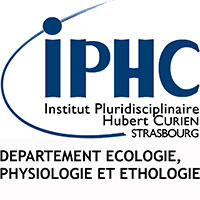Differential proteomics reveals age-dependent liver oxidative costs of innate immune activation in mice
Résumé
Individual response to an immune challenge results from the optimization of a trade-off between benefits andcosts of immune cell activation. Age-related immune disorders may have several mechanistic bases, fromimmune cell defects to chronic pro-inflammatory status and oxidative imbalance, but we are still lackingexperimental data showing the relative importance of each of these mechanisms. Using a proteomic approachand subsequent biochemical validations of proteomics-derived hypotheses,we found age-dependent regulationsin the liver of 3-months and 1-year old-mice in response to an acute innate immune activation. Old mice presented a chronic up-regulation of several proteins involved in pathways related to oxidative stress control. Interestingly, these pathways were weakly affected by the innate immune activation in old compared to youngindividuals. In addition, old mice suffered from lower glutathione-S-transferase activity and from higheroxidative damage at the end of the experiment, thus suggesting that they paid a higher immune-related costthan young individuals. On the whole, our data showed that a substantial fraction of the liver costs elicited byan activation of the innate immune response is effectively related to oxidative stress, and that ageing impairsthe capacity of old individuals to control it.Significance: Our paper tackles the open question of the cost ofmounting an innate immune response. Evolutionarybiologists are familiar since a long timewith the concept of trade-offs among key traits of an organism, tradeoffsthat shape life history trajectories of species and individuals, ultimately in terms of reproduction and survival.On the other hand,medicine andmolecular biologists study the intimatemechanisms of immune senescence andunderline that oxidative imbalance is probably playing a key role in the progressive loss of immune functionwithage. This papermerges the two fields by exploring the nature of the cellular pathways that are mainly affected byage when the innate immunity is triggered. To this purpose, a proteomic approach was used to explore liverprotein profiles and provide for the first time convincing data supporting the idea that oxidative stress constitutesa cost of innate immune response in old mice, possibly contributing to senescence. Proteomics-derived hypotheseswere furthermore validated using biochemical assays. This paper therefore illustrates the added valueof using proteomics to answer evolutionary biology questions, and opens a promising way to study the interspecificvariability in the rates of immune-senescence.
| Origine | Fichiers produits par l'(les) auteur(s) |
|---|

